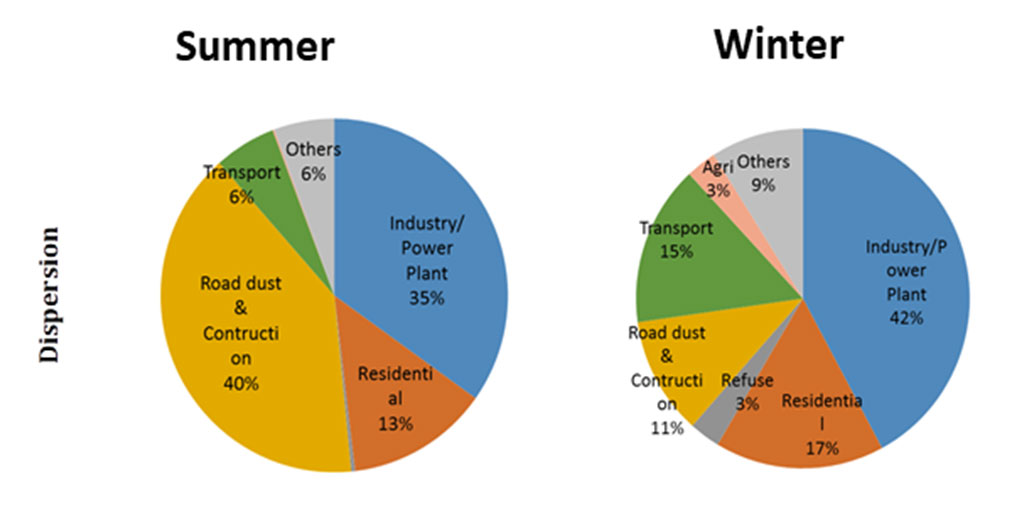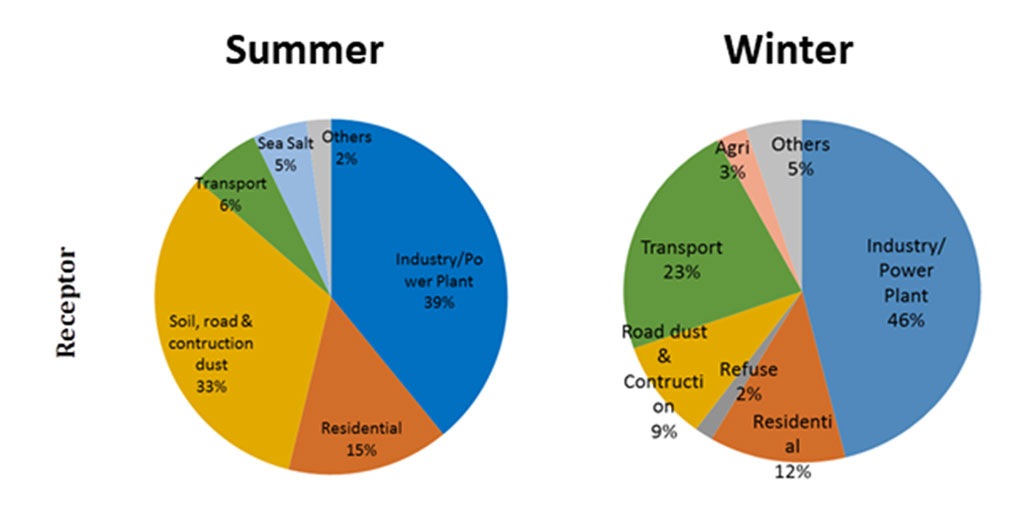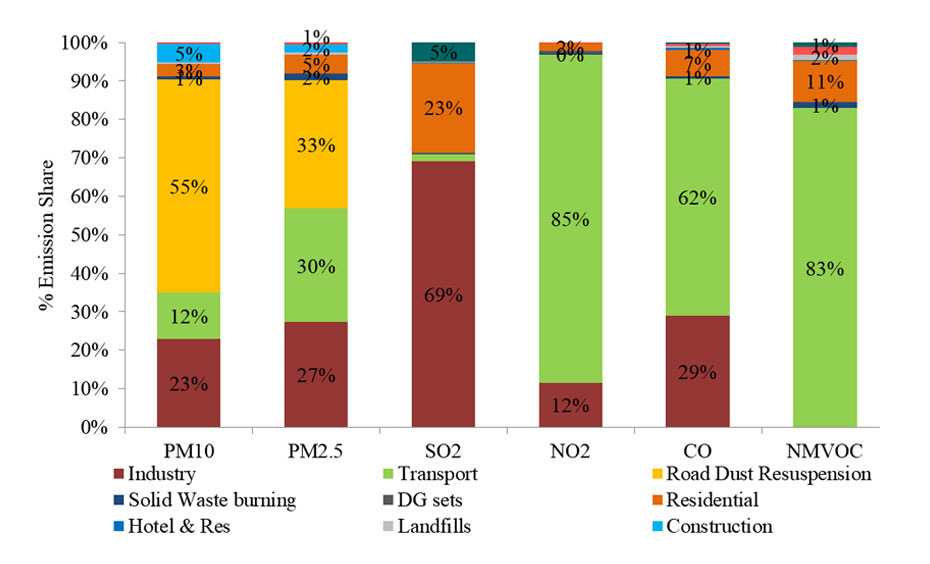Emission Inventory & Source Apportionment study
- Introduction
- National Clean Air Programme (NCAP)
- The Fifteenth Finance Commission
- Memorandum of Understanding with TERI
- Emission Inventory & Source Apportionment study
- Clear Air Action Plan
- Clean Construction Manual (22,049 KB)
- Continuous Ambient Air Monitoring Stations
- Air Quality Implementation Committee
- Air Quality Management Cell
- Clean Air Pledge
- Swachh Wayu Survekshan
- Monthly Progress Report Of Air Related Projects
- Results of Air Quality in Surat City
- Complaint Grievance System
- IT based Emission Inventory System
Source Apportionment Study for Surat city & district
In order to better understand the atmospheric chemistry, air quality, and its impact on human health, more accurate data of spatially and temporally distributed emissions is required. It is essential to estimate the impacts created by such the pollution sources, and hence apportionment of different sources towards prevailing pollution levels becomes very important. This is especially essential for the policy makers to formulate effective emission control strategies and air quality management plans. Emission inventory is an important tool for identifying the source of pollutants and quantitatively expressing their pollution load in a defined area at a particular time. Furthermore, the estimation of shares of contributing source to pollution concentrations at any receptor location is referred to as source apportionment, and is one of the most powerful technique strengthen the process of air quality management planning. Emission of pollutants from sources and their effects on ambient pollutant concentrations can be related using receptor and dispersion modeling techniques.
TERI in collaboration with Gujarat Pollution Control Board, Surat Municipal Corporation, has conducted this study on Source apportionment of particulate matter pollution in Surat city. This is supported by Bloomberg Philanthropies in order assist the Government of India in order to accomplish some of the important objectives of NCAP.
This report is aimed to provide essential knowledge about contributions of sources of air pollution in city of Surat using established scientific methodologies. This is an report which provides information on prevailing PM10 and PM2.5 levels and their chemical characteristics. In addition, the report presents the emissions inventory of different sources in the Surat district and results of receptor and dispersion models for apportioning the contributions of sources towards ambient PM concentrations.
Objectives
The major objectives of this study are:
- To monitor PM10 and PM2.5 concentrations at different area categories in Surat.
- To carry out chemical characterisation of PM samples.
- To conduct grid-wise emissions study for various sources in the Surat district and city.
- To conduct source apportionment study of particulate matter (both PM10 and PM2.5) using receptor and dispersion models.
- To project emissions levels in future under different control options and identify interventions for control.
- To suggest strengthening of air quality action plan for Surat city.
Emission Inventory and Source Apportionment Results


Total Emissions in the SMC area - Source wise % Share

Click here to view Report of Source Apportionment Study and health risk assessment (By The Energy & Resources Institute).
Micro Level Plan & Identification of Hotspots for Surat City
The city level clean air action plan is further broken down at micro-level, i.e., ward level. The micro plan is an area specific plan containing details of local hotspots and their sources of air pollution, measures to be taken to control them, and how these steps would be implemented. The micro plans are necessary because monthly data on pollution levels available with SMC and GPCB from across 10 air quality monitoring stations in Surat show that not only the levels of pollution differ from place to place within the city, but even the nature of pollutants is different.
Click here to view Micro level action plan.
Click here to view Micro level plan & identification of hotspot for Surat city.
Health Risk Assessment and Value of Statistical Life for Emissions Effects for Surat City
Ambient fine particulate matter (PM2.5) is a major risk factor for ill health and death. As indicated in the literature review, there were many national and international case studies included in assessment which have established robust causal associations between long-term exposure to PM2.5 and premature mortality from endpoints such as heart disease, stroke, respiratory diseases, and lung cancer, thereby substantially reducing life expectancy. In the Global Burden of Disease (GBD) 2019 comparative risk assessment, 5.5 million deaths were attributed to ambient air.
Click here to view Health Risk Assessment for Surat City.